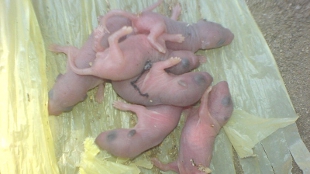Most children with spinal muscular atrophy (SMA) will never jump rope, play tag, or even walk because a genetic deletion will provoke the gradual destruction of their spinal motor neurons. By correcting this mutation in stem cells derived from patients, Italian scientists have successfully curbed the progression of the disease in a mouse model. The results, published last month (December 15) in Science Translational Medicine, suggest that SMA sufferers may one day serve as their own donors for neuron transplants to treat their disease, according to a report.
“[It] is a beautiful study of the potential for using induced pluripotent stem cells (iPSCs) to treat genetic diseases,” said Lisa Ellerby from Buck Institute for Research on Aging, who was not involved in the study but is currently investigating the use of the technique to treat Huntington’s disease (HD).
Over the last 2 years, stem cell therapies have done well in early clinical trials for sporadic neurological diseases, such as ALS and macular blindness. Such therapies have also shown promise for spinal cord injury, and just this week, the US Food and Drug Administration gave approval to the biopharma NeuralStem to begin a Phase I trial with fetal stem cells. It is the second US stem cell trial for spinal cord injury; Geron abruptly halted the first in 2011.







